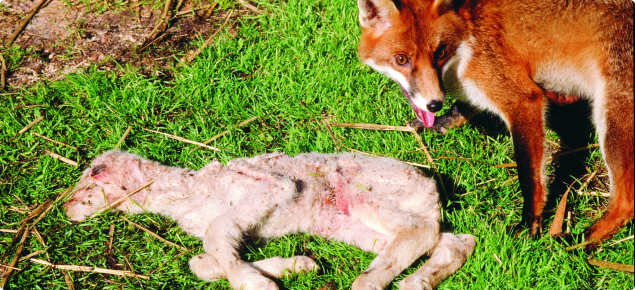When to carry out fox control
Several factors should be considered when planning fox control:
- In areas where rabbits and foxes are present it is recommended to control rabbits with 1080 first. Foxes are often poisoned after eating rabbits killed by 1080.
- Foxes should be controlled prior to lambing or kidding, particularly where fox predation has previously occurred.
- Foxes can learn to seek lambs or goat kids as prey. Farmers who time their lambing or kidding later than their neighbours should implement fox control methods to minimise losses due to foxes acquiring a learned habit to kill lambs and kids from neighbouring properties.
- The most effective fox control is achieved during late winter and spring. At this time foxes are less mobile as they are rearing young and food demands are high. At other times there are more young animals to move into vacated territories.
A district-wide campaign involving community groups can overcome the problem of reinfestation by removing foxes over a large area.
Control options
The available control options are often more effective when used in combination.
1080 baiting
Fox baiting with 1080 baits is the most cost-effective and efficient means of reducing fox numbers, as foxes are very sensitive to the 1080 poison (sodium fluoroacetate).
Although 1080 is quickly broken down in the environment and native animals in Western Australia have a natural high degree of tolerance to 1080, landholders should understand the restrictions for 1080 use and its disposal. Particularly, to avoid accidentally poisoning cats, dogs and other non-target animals.
Information on restrictions, permit requirements, list of products and lay rates, and tips on appropriate baiting practice can be found in the fox baiting with 1080 webpage.
Canid pest ejectors
Canid Pest Ejectors (CPEs) are a newly approved method of deploying 1080 to wild canids (foxes and wild dogs) in Western Australia. CPEs are spring-activated baiting devices that use a piston to propel the contents of a 1080 capsule directly into the mouth of a wild dog or fox as it pulls the bait placed on the head of the ejector.
Additional information is available in the Canid Pest Ejectors webpage.
Husbandry methods
Holding livestock in small paddocks can help to decrease predation on newborn lambs and kids. These enclosures make it easier to monitor the flock and reduce the chances of young being left unattended. Shed lambing or kidding can be used to prevent predation of valuable animals. Some producers have successfully used trained guard dogs or Alpacas to protect their flocks.
Exclusion fencing
Foxes are agile animals and can penetrate various types of fences. Wire netting with mesh size not exceeding 80mm (about 3 inches) will prevent foxes passing through a fence. The netting should be 1.2-1.9m high and buried at least 450mm deep. An apron of netting angled outwards for 200mm at the base of the fence provides an added deterrent to digging under the fence. Electrification of outriggers or closely spaced plain wires can also discourage foxes from climbing over or through fences.
Wire netting enclosures roofed with netting or other material will protect poultry from foxes.
Fumigation
DEN-CO-FUME is the only fumigate product registered for use on foxes in Australia, including Western Australia. The use of any other fumigate product or gas is unlawful in Australia.
Den destruction
Where the den is accessible to appropriate machinery, deep ripping can destroy it. However, care should be taken in susceptible threatened plant communities.
Trapping
Soft catch jawed traps and cage traps are sometimes used to control particular problem foxes. Under the Animal Welfare (General) Regulations 2003 metal jaw traps can only be used if the jaws are padded or otherwise modified so that any captured animal is unlikely to suffer significant injury. Captured foxes must be disposed of humanely. Under the Biosecurity and Agriculture Management Regulations 2013 a permit from DAFWA is required to use jaw traps or snares for the capture of foxes in built-up areas (urban areas) and land zoned as special rural zone as defined in the Planning and Development Act 2005.
Shooting
Shooting can be effective in reducing fox numbers locally. Recommended equipment comprises a good quality spotlight (100 watts) and a small calibre (for example, 0.22 Hornet, 0.222), high velocity rifle fitted with telescopic sights.
Summary of options for fox control
| Option | When to use | Cost | Advantages | Disadvantages |
| 1080 baiting | Late winter and spring when cubs are small. When there is a problem or to pre-empt one, for example, prior to lambing. | Most cost-effective method. Least labour-intensive. | Large areas covered quickly. Foxes very susceptible to well-made 1080 baits. Native animals tolerant of 1080 but may be affected if baits are misused. | Pets at risk. Baits should be hidden or lightly covered to camouflage them with surrounding groundcover where ever non-target animals are active. Uneaten baits should be retrieved. |
| Rabbit baiting with 1080 | Late summer to early autumn. | Low. | Foxes killed by eating poisoned rabbits. | Pets at risk. |
| Husbandry methods | At all times. Important at lambing time. | Inexpensive. Can be integrated into routine farming practices. | Increased attention benefits stock. No danger to pets. | Threat of predation still exists. Foxes may move to other paddocks. |
| Exclusion fencing | To protect lambing areas. To protect poultry. | Can be expensive. | No danger to pets. | Threat of predation still exists elsewhere. Needs ongoing maintenance. |
| Trapping | Use sparingly for problem foxes. | Very labour- intensive. | Can be used to target specific individuals. Correct use will safeguard pets. | Foxes can become 'trap shy' if traps are not well set. A permit from DAFWA is required for use in urban and special rural zone areas. |
| Shooting | As an adjunct to other methods. For problem foxes. | Very labour- intensive. | Target-specific. | Selective for young foxes. Not suitable in built-up areas. |

